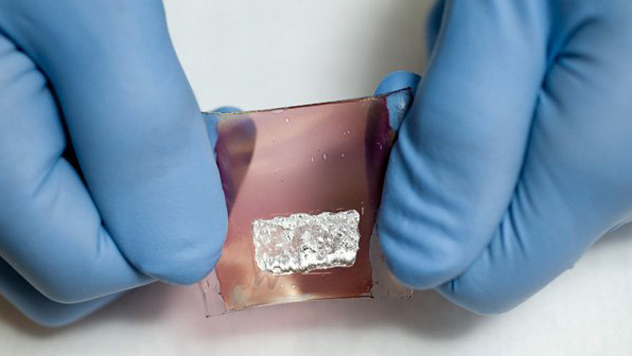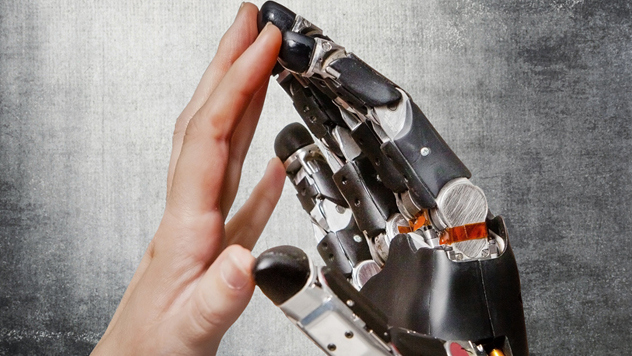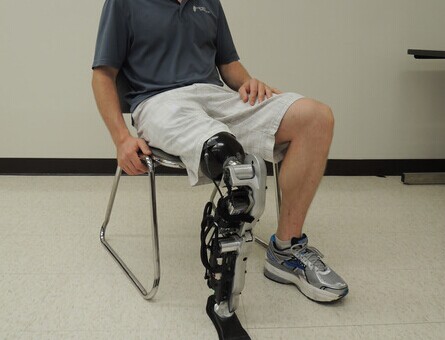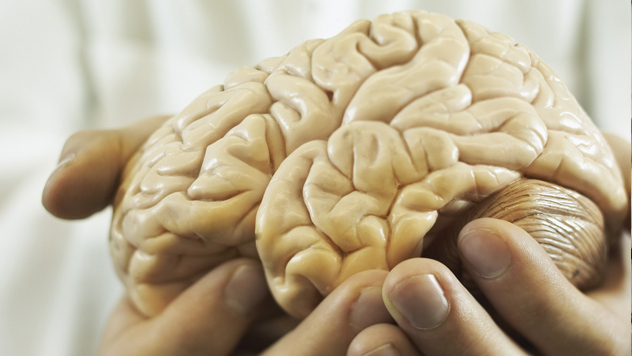Human bodies are frail, easily damaged packages full of parts that can never fully come back once lost. Luckily, researchers worldwide are working on replacing every bit of the body to make us all cyborgs.
10.Supersensitive Electronic Skin

Skin has the thankless job of coating and protecting your whole body, making it your most easily damaged organ. When you burn or rip off a stretch of skin, your main option right now is to graft some back on from elsewhere on your body. But an effective synthetic replacement skin may not be that far off, thanks to research from Stanford scientists. Stanford's Zhenan Baohas has developed a super-flexible, super-durable, and super-sensitive material that can be the basis for future synthetic skin. People have tried developing synthetic skin before, but Baohas's material handles touch sensitivity better than any predecessor. It contains organic transistors and a layer of elastic, letting it stretch without taking damage. And it's self-powered—this skin contains a series of elastic solar cells.
9.Beating Hearts Created In A Petri Dish

Scientists have long investigated stem cells' potential for growing hearts, and they reached a major milestone this year when they created heart tissue than can beat on its own.The University of Pittsburgh team used stem cells made from skin to make MCPs, a special kind of cell that acts as a precursor to cardiovascular tissue. They then placed these cells on a 3-D scaffold designed to support a mouse heart. Within 20 days, the new heart began beating at 40 to 50 beats per minute.This heart is too weak to actually pump blood, which is the primary reason anyone would want an new heart. But the tissue has a lot of potential for patching heart muscles that have suffered damage.
8.Prosthetic Hands That Sense Touch

Current prosthetic hands do little beyond filling the arm-shaped space between your body and the air. Sure, they can grasp things all right, and they help in balance, but they lack one of the human hand's most important abilities—the sense of touch. People with prosthetics can't detect if they're in contact with an object without looking at it directly. A research team at the University of Chicago has solved this problem, producing hands that send electric signals to the brain. They've begun with monkeys as test subjects, studying the animals to see how their brains respond to touch. When outfitted with prosthetic hands that stimulate their brains that way, the monkeys respond just as though they physically touch objects themselves. Programming these same signals into artificial human limbs would give amputees replacement hands unlike anything we've developed before.
7.Thought-Controlled Bionic Legs

Though bionic legs are of course a huge boon to amputees, they lack actual nerve connections with the body. As a result, walking on them is cumbersome and tiring. But last year, Seattle resident Zac Vawter was outfitted with the world's first thought-controlled leg, a bionic limb that takes signals directly from his mind.This technology previously existed for arms, but legs are rather more complicated. And since a misread signal can send you jumping off a bridge or in front of a moving car, thought-controlled legs need more stringent programming than equivalent arms. As one of the researchers delicately put it, “If you're using a bionic arm and it misbehaves, the elbow may move slightly. If the prosthetic leg misbehaves . . . that could be quite a safety issue.”Vawter climbed 103 floors of a Chicago skyscraper on his bionic leg, but its designers are still working on improving it. To optimize it for everyday use, they have to make it even thinner and lighter. Its successor (the iLeg Air?) may meet the Army's stated goal for a bionic leg—10,000 steps without recharging.
6.Miniature Human Brains

Brain death is a bit of an inconvenience if you're a fan of living, and if you're looking to replace yours with a spare, you're out of luck. Sure, maybe we'll one day be able to plant brains into skulls, but the brain's not just another organ. It contains all your thoughts and memories. They can plop a new brain in your head, but you'll still be gone, so the idea of making artificial brains may seem absurd.But that hasn't stopped scientists from growing actual human brains in a lab. Starting with nothing but stem cells, scientists in Austria this year managed to create brains equivalent to those in nine-week-old fetuses. These miniature brains are the size of peas and are incapable of thought—so far. The one thing keeping the brains from growing beyond this stage and becoming fully functional is that they have no blood supply.Though these brains aren't going into anyone's bodies, they're proving a great resource for scientists investigating brain diseases.
翻译:郑静 来源:前十网











